|
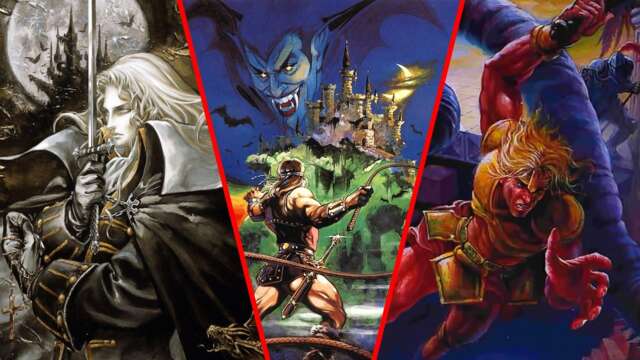
Times may change, but if there's one thing that remains eternal, it's a Castlevania adventure in which you crack your whip and take on Dracula when he has home-field advantage. Konami's long-running series has been dormant as of late, but with decades of games and a highly acclaimed animated adaptation on Netflix, the monster-slaying franchise is still a fan-favorite that hasn't dulled with age. From its humble beginnings on the NES to its grand reinvention on PS1, a modern-day Renaissance on the Game Boy Advance, and a bold stab into three-dimensional territory, Castlevania games at their best have always been a tight balance of ghoulish design and action that requires quick reflexes. With such a big and varied collection, it wasn't easy to rank the best Castlevania games, but we did our best. That said, it's to be expected that you will disagree with at least of few of the choices and placements. These are the 15 best Castlevania games, ranked.
15. Castlevania: Lament of Innocence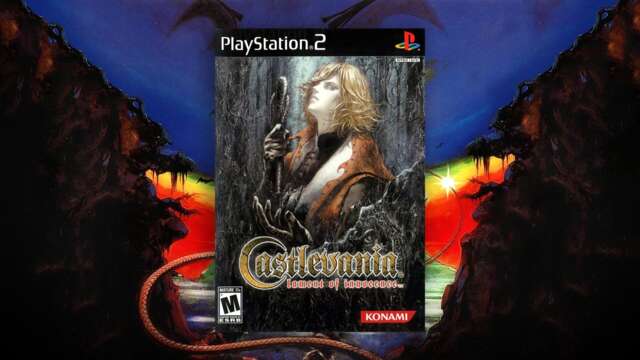
Updating a traditionally 2D franchise into a 3D adventure can push even the most experienced studio to its limits, but Konami found its groove with Castlevania: Lament of Innocence. 1999's Castlevania for the N64 was a janky experience, but Lament of Innocence provided intense action and superb art direction that went all in on its gothic atmosphere. Sure, it's not a perfect 3D Castlevania thanks to the barebones story and meagre amount of content on offer, but it's easily a slick action game with polished arcade-influenced action gameplay that propels it forward like a vampire with an empty stomach at a blood donation drive.
14. Castlevania: Circle of the Moon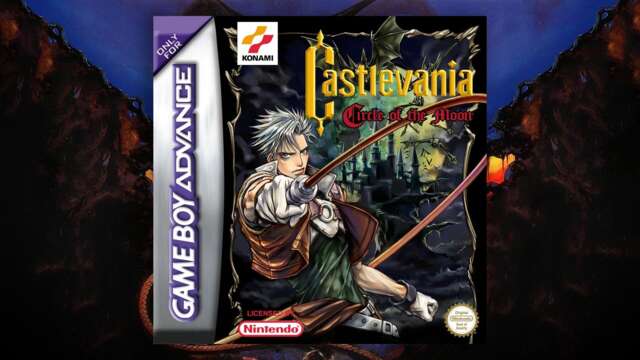
With Symphony of the Night casting a longer shadow than Dracula's habitual resurrections, Circle of the Moon continued the metroidvania renaissance of the franchise on the Game Boy Advance. The main takeaway with Circle of the Moon is that it's definitely a Castlevania game, one that stars protagonist Nathan Graves as he builds up an arsenal of vampire-slaying weapons while exploring a castle filled with demonic threats. All the Castlevania basics translated well to the diminutive GBA screen, the dual-select systems shook up the gameplay brilliantly, and the pocket-sized adventure was a treat to play in short bursts on the Nintendo handheld.
13. Castlevania II: Belmont's Revenge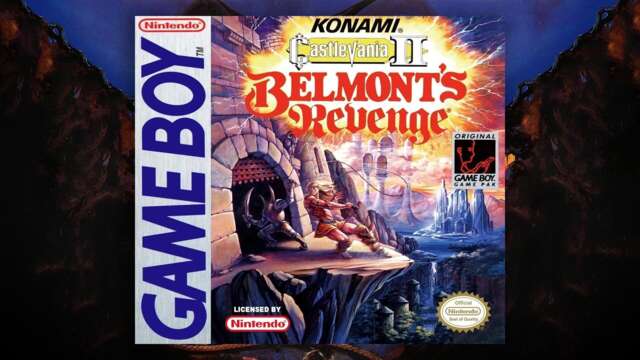
By the time that Belmont's Revenge made its appearance on the Game Boy in 1991, Castlevania was a well-established franchise with a distinctive tone and style. Castlevania fans expecting a whip-cracking adventure in Dracula's physics-defying castle weren't disappointed, especially after 1989's Castlevania: The Adventure garnered mixed reviews when it debuted in 1989 on the Game Boy. Belmont's Revenge was faster, smoother, and better-looking in comparison, providing a polished handheld Castlevania experience that could easily gobble up a small stock of AA batteries as you hunted down Dracula's minions.
12. Castlevania: Portrait of Ruin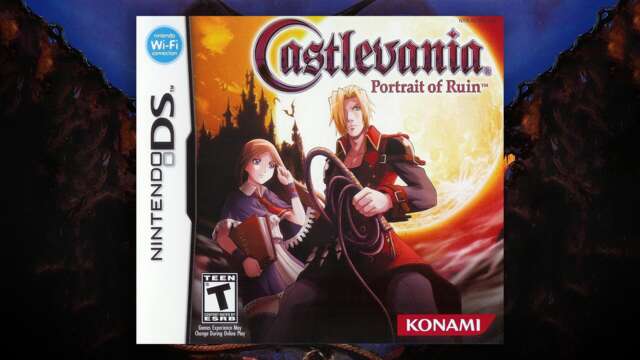
Portrait of Ruin added some interesting ideas to the Castlevania formula, giving players two vampire-hunters--Jonathan and Charlotte--to control, each one focusing on a core strength. Throw in a clever use of portraits that serve as unique environments in which to put monsters to permanent rest, powerful combination attacks, and Konami doing a top-notch job blending striking 2D visuals with powerful 3D graphics on the DS, and you had everything you needed for a rock-solid Castlevania that introduced some fascinating creative flourishes to the formula mix.
11. Castlevania: Harmony of Dissonance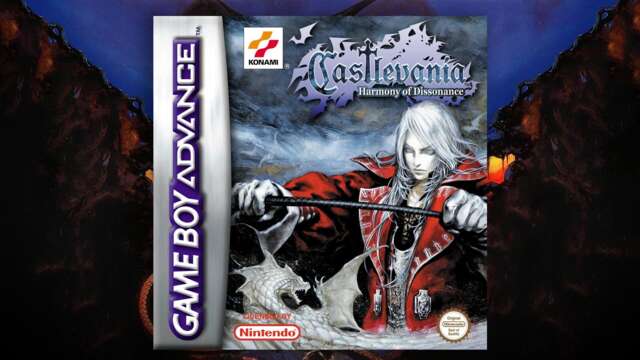
Konami's second Castlevania on the Game Boy Advance, Harmony of Dissonance is one of the definitive entries in the franchise on that handheld. Featuring better visuals when compared to Circle of the Moon's dim graphics and boasting an eclectic mix of powers to sample against the terrifying tenants in Dracula's castle, Harmony of Dissonance was a portable powerhouse at the time. One of the most satisfying Castlevanias to tackle thanks to its reworked difficulty settings, things would only get better on the GBA in the future thanks to a sorrowful pair of games on the horizon.
10. Castlevania III: Dracula's Curse (NES)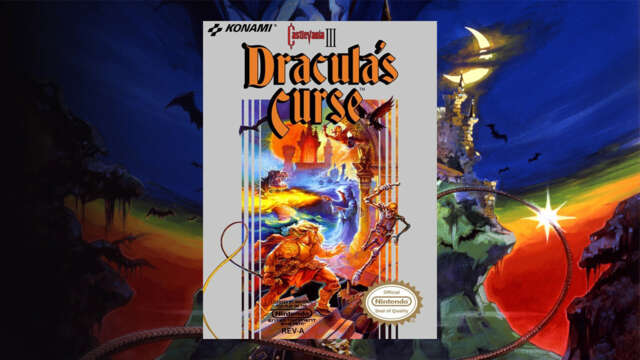
We saw several NES franchises make big changes with their second installment before reversing course back to what worked before when a third game eventually released. Super Mario did it, Zelda did it, and Castlevania did it, too. The non-linear but often cryptic and tedious Castlevania II: Simon's Quest was followed by Castlevania III: Dracula's Curse, which took a more linear approach without being as straightforward as the first game. It featured multiple playable characters, some of whom you'll recognize from the animated series, both these objections didn't mean the game was easier. Instead, it's arguably the hardest of the original trilogy, to the point that it's reasonable to rage-quit and never actually finish it.
9. Castlevania (NES)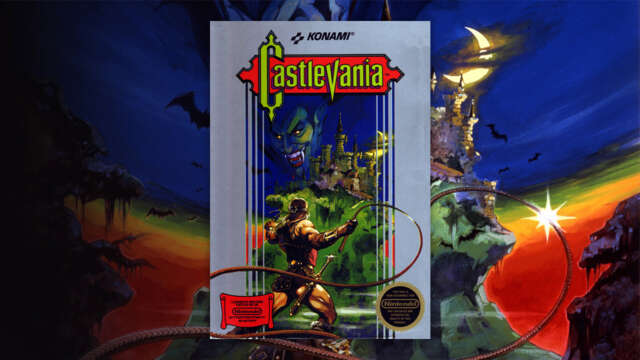
The game that started it all on the NES and began--at least in terms of release order--the ongoing struggle between the Belmont family and the legendary vampire Dracula, the first Castlevania did a whole lot right. Its art direction and music, limited as they had to be on the system's basic hardware, are still classic today, and the enemies are just as iconic. Fighting literal Death and mythological creatures before you ever take on Dracula showed just how powerful the vampire was going to be, even if you had full health and a nearly bottomless supply of holy water to throw his way. However, the original Castlevania was also a deeply frustrating game because of its stiff controls, which didn't let you course-correct jumps as you could in games like Super Mario Bros. Combine this with a knockback effect when taking damage, and you had a couple of broken controllers.
8. Castlevania: Bloodlines (Genesis)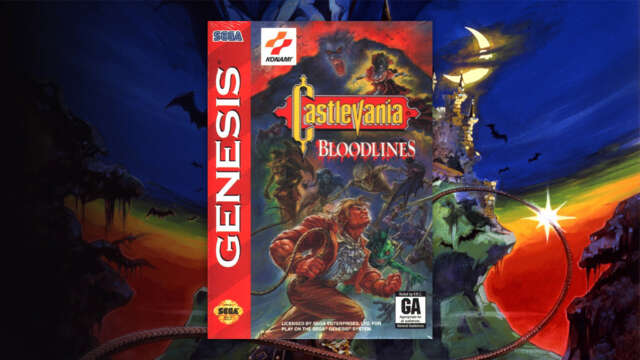
A Nintendo-exclusive franchise for years (we won't talk about that terrible arcade game), Castlevania made the jump to the competition with Castlevania: Bloodlines. A Sega Genesis exclusive, it wasn't drastically different from its predecessors in terms of design, with action-oriented gameplay and the same blend of platforming and tricky combat the series was famous for. Where it really stood out, however, was the weird lore implications it made, including connections to the Bram Stoker Dracula novel that haven't been that thoroughly explored in most of the series' other games. Like the other 16-bit era Castlevania games, Castlevania: Bloodlines' visuals have held up very well, and it's still just as playable today as it was back in 1994.
7. Castlevania: Dawn of Sorrow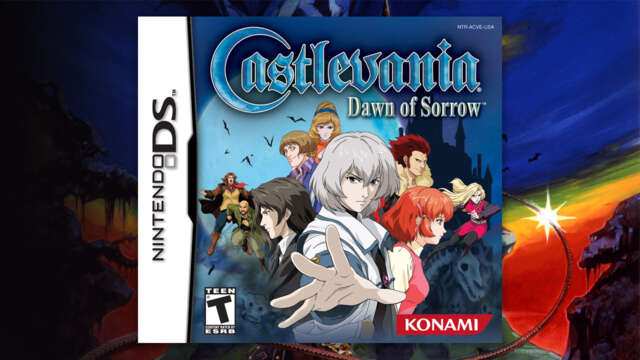
The successor to Aria of Sorrow--more on that one in a bit--Castlevania: Dawn of Sorrow continued its more modern story and setting, ditching the centuries-old tales of past games and putting players back in the shoes of Soma Cruz. A supernatural hero with ever-increasing power that fits the Metroidvania template first seen in Symphony of the Night, Soma's abilities are quite a bit more varied than what the Belmont clan offers. But it's also what the DS itself offered that made Dawn of Sorrow stand out, with the game's map being displayed on the top screen permanently, thus freeing up space for the action on the bottom screen and helping to avoid unnecessary pausing. It certainly wasn't the only DS game to do this, but in an exploration-heavy series like Castlevania, it's extremely helpful.
6. Castlevania: Order of Ecclesia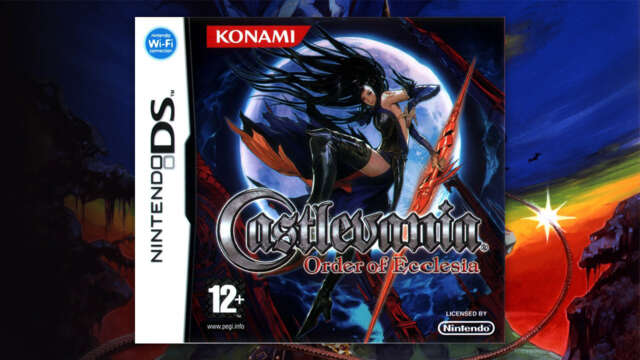
The last Nintendo DS game in the series--and the last retail Castlevania game before the franchise was reimagined--Castlevania: Order of Ecclesia is also the final original game in the series with legendary producer Koji Igarashi's involvement. His extensive history with Castlevania may have been why Order of Ecclesia made such big changes, breaking from the backtracking-heavy castles in favor of a streamlined approach that melds some elements from later games with the level-based earlier titles. Once again, it also stars someone other than a Belmont, putting you in control of Shanoah, who can steal enemies magic Kirby-style in order to use different weapons. While we love the classic Vampire Killer whip, this variety does help to keep things fresh, and it makes Order of Ecclesia worth revisiting.
5. Castlevania: Lords of Shadow
Originally revealed without the Castlevania name attached to it, anyone playing through most of Castlevania: Lords of Shadow may wonder what it had to do with the series, at all, with the exception of the "Belmont" surname for protagonist Gabriel. A famous twist makes the Castlevania name much clearer, however, and caps off what is one of the most underrated action-adventure games of the Xbox 360 and PS3 generation. A brilliant hack-and-slash combat system, orchestral music, solemn tone, and Hollywood actors in the lead roles all helped it become a sleeper hit. Its sequels, both Lords of Shadow 2 and the 3DS's Mirror of Fate, weren't as successful, which is a shame considering how great the original remains today.
4. Castlevania: Rondo of Blood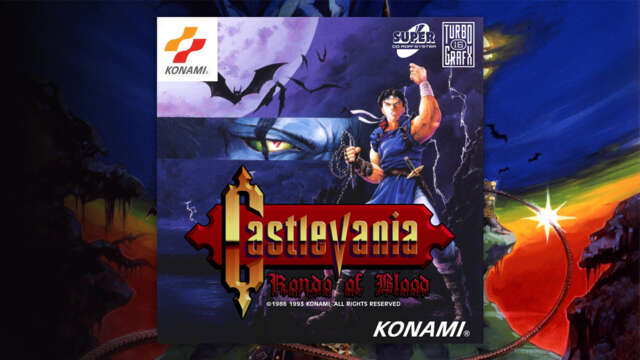
This is where things get a little bit confusing. There are two different versions of Castlevania: Rondo of Blood--the one we've ranked as the fourth-best in the series, and another called Castlevania: Dracula X, which came to the Super Nintendo. If you wanted the better game back in the mid-90s, you had to have a PC Engine, which is the Japanese version of the TurboGrafx-16. It became a little bit easier to play later, with a remake included in Castlevania: The Dracula X Chronicles an eventual port to PS4 with Castlevania Requiem, and a spot on the excellent TurboGrafx-16 Mini console. Flashy visuals with smooth animations and brilliant sound design make it feel far newer than it actually is (the game was first released in 1993 and required a CD peripheral). Rondo of Blood is an often overlooked entry that can't be missed, especially because another game on our list is actually a sequel to it.
3. Castlevania: Aria of Sorrow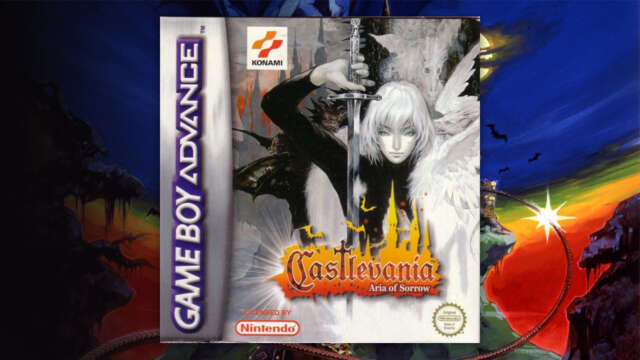
The last game in the series to release for Game Boy Advance was also the best, and it did so by moving further away from the standard Castelvania setting and premise as much as possible. Dracula still had a role in the game, but it took things in somestrangedirections unrelated to the Belmonts and their seemingly never-ending battle against the vampiric lord. Soma Cruz, who returned in the sequel Dawn of Sorrow, makes his first appearance in this game, and you can use a bunch of different weapons to take down your enemies while also using their abilities to further improve your power. If there were ever a Castlevania game meant for Hot Topic patrons with straightened hair and Hawthorne Heights shirts, this is it, but that's not necessarily a bad thing.
2. Castlevania: Symphony of the Night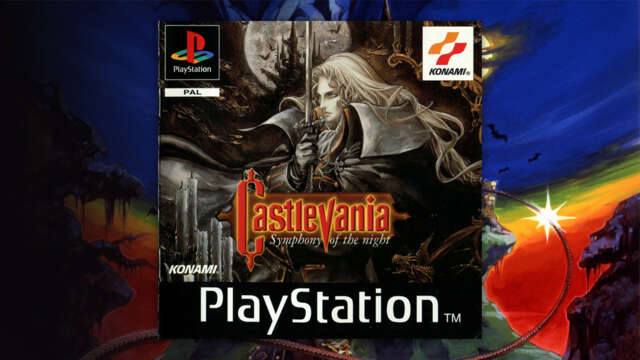
The game that changed everything, Castlevania: Symphony of the Night was a pretty radical departure for the series, moving from mostly level-based action-platforming to an open-ended action-RPG that took clear inspiration from the Metroid series. It even led to a new name for a whole sub-genre of games--metroidvania--and a template that Castlevania would mostly stick to for more than a decade. Despite releasing on the original PlayStation well into its lifespan, Konami didn't force 3D visuals into Symphony of the Night, something it couldn't help but do in the mediocre Nintendo 64 games, and instead delivered a flashy and timeless 2D visual style. The game's English translation also offered some unintentional humor, including the famous "miserable little pile of secrets" line. But enough talk, it's number 2!
1. Super Castlevania IV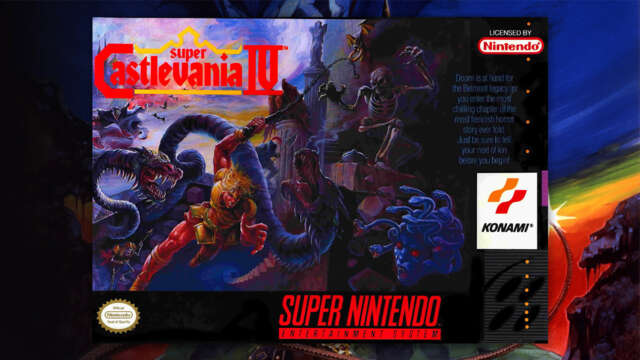
Is it controversial to have anything but Symphony of the Night (or Aria of Sorrow) in the top spot? Probably, but being right isn't always easy. Super Castlevania IV is the original Castlevania formula perfected, completed with some of the best action-platforming ever delivered in a 2D game. The stiff movement of the earlier games is replaced by fine-tuned jumps that you can adjust in the air, and the Super Nintendo's increased power allowed Konami to offer more ambient effects, better environments, and a much more detailed Simon Belmont sprite. A very slight and intentional freeze-frame effect when hitting enemies also gives each attack more weight without needing rumble in the controller, which is especially important when facing off against the game's difficult bosses. But do you think any of that matters? You're so stupid! Super Castlevania IV could be legendary based on its music alone. Using the SNES' excellent sound chip, gothic-style organs blare as you fight through the spooky sections of Dracula's castle, and the tunes will be stuck in your head for weeks after you finish playing.
|




















